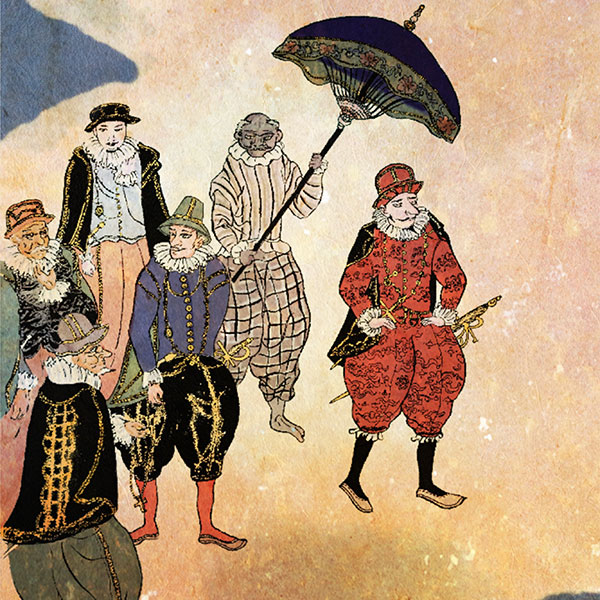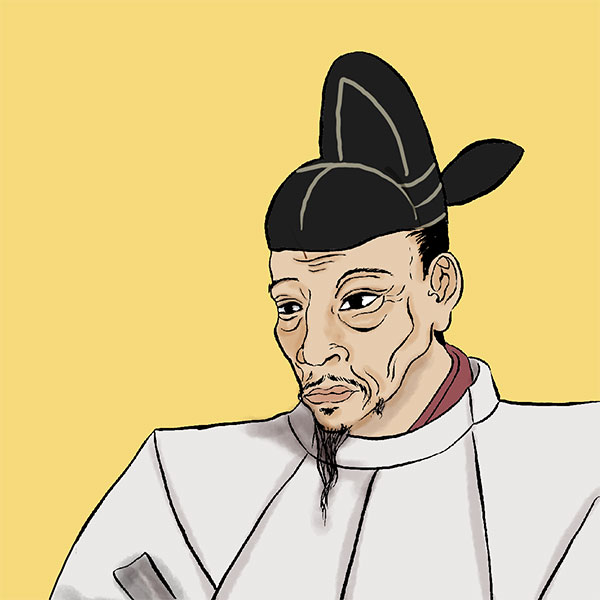Bateren expulsion order (2/2)Hideyoshi's Christian Restriction Order

Bateren expulsion order
- Article category
- case file
- Incident name
- Order to banish Bateren (1587)
- place
- Nagasaki Prefecture
- Related castles, temples and shrines

Hirado Castle
- people involved
- Being a Christian should depend on one's heart.
- The territory is ruled by daimyo, but it is unreasonable and shameful for them to impose Christianity on the temples and peasants within the territory.
- Having a daimyo rule a territory is temporary, and even if the daimyo is replaced, the peasants remain the same. Sometimes things are unreasonable, and if a daimyo says something outrageous, he can do whatever he wants to the peasants.
- Daimyo with 200 towns or more than 2,000 kans of land need permission from Kogi (Hideyoshi) to become a Christian.
- If the chigyochi is lower than that, it depends on the individual's will, just like in each sect of Buddhism.
- Regarding Christians, I have heard that they agree with each other even more than the Ikko sect, but the Ikko sect establishes jinaimachi in each province, does not pay annual tribute to the daimyo, and furthermore, in Kaga province, the people of the territory are made followers of the Ikko sect. It cannot be hidden that Hideyoshi is becoming an obstacle to his ability to rule the country by driving out the Togashi clan, the ruler of the country, and having priests of the Ikko sect rule Kaga, and even trying to take control of Echizen Province. Thing.
- Monks who are followers of Hongan-ji Temple are allowed to establish a temple in Tenma, but the Ikko sect has not been allowed to do so for some time.
- It is more unlikely for a feudal lord with a province or territory to impose Christianity on his vassals than for a Honganji disciple to establish a temple territory. Since they become a hindrance to governing the world, such reckless people should be able to be punished.
- For a lowly person to become a Christian depends on their will, and it is not a problem, just like a Buddhist sect.
- It is outrageous to sell Japanese people to Great Tang (China), Nanban, and Goryeo (Korea). Prohibits the buying and selling of people in Japan.
- It is shameful to buy, sell, and eat cows and horses.
The Christian faith is tolerated, and there is no mention of trade between the two countries. Regarding conversion to Christianity, there are restrictions for feudal lords due to the size of their territory, but for commoners, using the Ikko sect as an example, they are allowed to do whatever they want as long as it is not forced. Of particular note is the ban on the sale and purchase of Japanese people at the end, which shows that Hideyoshi was concerned about the enslavement of Japanese people.
After a discussion with Coelho, the document that was published on June 19th was the ``Matsuura Family Documents''.
- Japan is a divine country, and it is disgraceful for a Christian country to impart ``evil laws.''
- It was unheard of for local people to become Christians and have temples and shrines destroyed. The fact that territory is given to feudal lords and samurai is temporary, and they are supposed to abide by the laws of the country (Hideyoshi), but it is inexcusable for them not to do so.
- Hideyoshi believed that Christian missionaries were able to gain the voluntary conversion of believers through their wisdom, but it is unfortunate that they are destroying Japanese Buddhism with their own strength. We cannot leave the missionaries in Japan, so please prepare and return to Japan within 20 days from today. Those who behave unreasonably with the missionaries during that time will be punished.
- Since the black ships (Nanban ships) come here for business, they should be treated separately and continue to do business in the future.
- From now on, people will be allowed to travel to and from Christian countries even if they are not merchants, as long as they do not interfere with Buddhism.
In summary, it prohibits Christian missionary work and orders Christian missionaries to leave the country within 20 days. Trade between China and China continues, and as long as it does not interfere with Buddhism, it is OK to come and go. However, unlike the June 18th one, it uses very strong language, calling Christianity = "an evil law," and also orders the missionaries to leave the country within 20 days. For some reason, there is no mention of the ban on buying and selling by Japanese people.
It seems as though Hideyoshi hardened his attitude toward Christianity in just one day, but it is generally accepted that the memorandum dated June 18th was intended for domestic use, while the Matsuura family document was intended for the Society of Jesus. It has become. According to this theory, one of the reasons why the contents of the document issued to the Jesuits were so strict may have been due to the discussion with Coelho just before that.
Was the expulsion order effective?
Due to the above-mentioned circumstances, Toyotomi Hideyoshi issued an order to expel Battelen, but in the end it did not have much effect. This is because Hideyoshi did not prohibit trade with Nanban. The missionaries who were forced to leave Japan were also traders. Because of this, the missionaries were able to recover.
However, when it was first released, even the missionaries were surprised and anxious. Coelho appealed to Hideyoshi that it would be difficult to leave the country in just 20 days due to the arrival of ships, and Hideyoshi allowed the missionaries to stay in Hirado. Missionaries gathered in Hirado to consider future responses. In the end, he decided to continue his missionary work in secret. By the way, Coelho made aggressive moves such as encouraging Christian feudal lords to oppose Hideyoshi and requesting military aid from the Philippines, but ultimately failed.
Meanwhile, Hideyoshi destroyed Nanbanji Temple in Kyoto, including the church and related facilities, and confiscated Nagasaki, placing it under his direct control. However, Hideyoshi, who placed great importance on trade with South Korea, did not go so far as to ban Christianity, and in the end continued to tolerate Christianity. In 1593, Pedro Baptista, a Franciscan missionary from the Philippines, had an audience with Hideyoshi and received permission to preach.
After that, Hideyoshi hardened his attitude towards Christianity due to the San Felipe Incident in 1596. This incident occurred when the Portuguese, who were at war with Spain, falsely accused a Spanish galleon that had drifted ashore in a storm, saying, ``Spain is pirates, and they came here to survey Japan with the intention of conquering it.'' , a crew member who was under suspicion uttered a bold statement, saying, ``Spain is conquering various places while proselytizing Christianity, and Japan is coming under its control.'' In response, Hideyoshi issued an edict banning Christianity, and in December 1597, a total of 26 Franciscan missionaries and Japanese Christians were executed in Nagasaki. Martyrdom of the Six Saints).
After entering the Edo period, Tokugawa Ieyasu initially tolerated Christianity, but he was involved in a fraud incident involving Christians that occurred from 1609 to 1612. In the wake of the ``8 Incidents'', a ban on Christianity was issued. They forbid missionary work and try to expel missionaries. The following Tokugawa Hidetada also took a stance against Christianity, and Christians were subjected to severe oppression and persecution, leading to the ``Shimabara Rebellion'' that occurred in Shimabara and Amakusa in 1637. .
Reread the article on the expulsion order for Bateren
- people involved

- WriterNaoko Kurimoto(Writer)I am a former travel industry magazine reporter. I have loved history, both Japanese and world history, since I was a child. I usually enjoy visiting temples and shrines, especially shrines, and often do ``pilgrimages to sacred places'' themed around historical figures. My favorite military commander is Ishida Mitsunari, my favorite castle is Kumamoto Castle, and my favorite castle ruins is Hagi Castle. My heart flutters when I see the ruins of battle castles and the stone walls of castle ruins.




